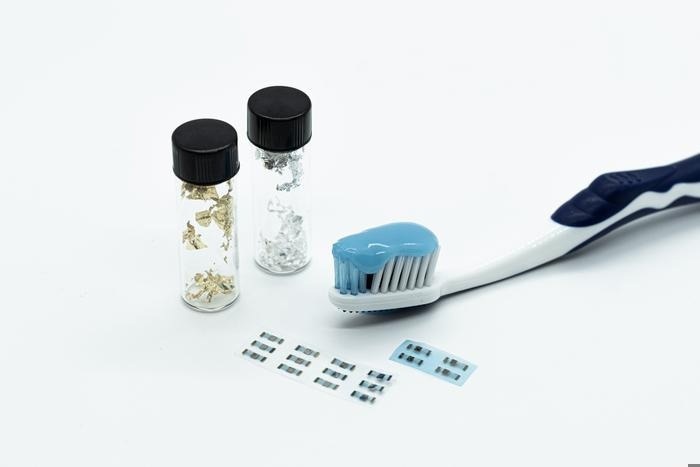Reviewed by Lexie CornerSep 27 2024
A research team from the Istituto Italiano di Tecnologia has developed a toothpaste-based transistor, pushing the boundaries of edible electronics. This cutting-edge nanodevice could play a key role in future smart pills designed to monitor health conditions from inside the body and safely dissolve once their function is complete. The study was published in the journal Advanced Science.
 A toothpaste-based transistor is the latest innovation from the research team at the Istituto Italiano di Tecnologia in Milan. Image Credit:IIT-Istituto Italiano di Tecnologia
A toothpaste-based transistor is the latest innovation from the research team at the Istituto Italiano di Tecnologia in Milan. Image Credit:IIT-Istituto Italiano di Tecnologia
Crystals of copper phthalocyanine, a blue pigment commonly used as a whitening agent, are present in many commercial toothpaste formulas. This material acts as an optical filter to enhance the appearance of teeth and is gradually consumed and broken down by saliva throughout the day.
In collaboration with a dental researcher from the University of Novi Sad in Serbia, the team at IIT's Center for Nano Science and Technology (CNST) in Milan, Italy, investigated the properties of copper phthalocyanine. Their analysis of clinical data and laboratory simulations revealed that people inadvertently ingest around 1 mg of this substance each time they brush their teeth.
With the amount of copper phthalocyanine we ingest daily, we could theoretically manufacture approximately 10,000 edible transistors.
Elena Feltri, Study Lead Author and Doctoral Student, Istituto Italiano di Tecnologia
Copper phthalocyanine's chemical structure enables charge conduction within its crystals, making it a promising candidate for use as a semiconductor in organic electronics applications.
The research team incorporated this novel semiconductor component into edible circuits using a well-established method. The circuits were constructed on an ethylcellulose substrate, with electrical contacts printed using inkjet technology and a solution of gold particles, often used in food decoration.
The transistor operates at a low voltage of less than 1 V, facilitated by an electrolytic gel "gate" made from chitosan, a food-grade gelling agent derived from crustaceans like blue crabs.
This edible transistor, developed in the Printed and Molecular Electronics laboratory led by Mario Caironi, follows the creation of an edible battery by the same team last year. Caironi's lab focuses on exploring the electrical properties of food and its derivatives to develop edible electronic devices for future applications in food quality control and healthcare.
In 2019, the European Research Council awarded Caironi a €2 million grant for the ELFO project to explore the potential of food electronics. Additionally, since 2021, his team has been involved in the European RoboFood project, which seeks to develop edible robots.
The next step for the researchers is to identify more edible materials with suitable chemical and physical properties to create a smart edible electronic device capable of monitoring body parameters in the gastrointestinal tract for medical applications.
Journal Reference:
Feltri, E., et al. (2024) A Fully Edible Transistor Based on a Toothpaste Pigment. Advanced Science. doi.org/10.1002/advs.202404658.